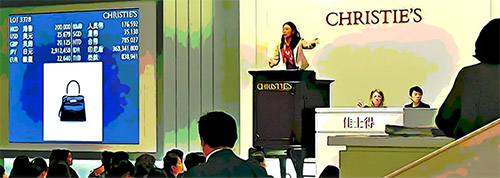
Non-fungible tokens may change everything. Art collector Pablo Rodriguez-Fraile paid nearly $67,000 for a 10-second video artwork. He could have watched it online for free. He sold it recently for $6.6 Million. A video artist who goes by the name Beeple created that video artwork. Blockchain authenticated the video. This is a digital signature which certifies who owns it and that it is original. Just like blockchain currency.
These new type of digital assets are called a non-fungible tokens or NFT. Fungible is a legal term meaning able to replace or be replaced by another identical item or mutually interchangeable. This is in contrast to conventional currency like dollar or cryptocurrencies like bitcoin, and many network or utility tokens, that are fungible in nature. People are pursuing non-fungible tokens online items and spending a lot of money buying them. Non-fungible tokens create verifiable, but artificial scarcity in the digital world, as well as digital ownership. The blockchain be publicly authenticates items as unique, unlike conventional online items which can be easily copied over and over again.
A fungible item is a dollar bill or a bitcoin. My dollar is worth the same as yours. We could trade and no one would feel cheated. You can divide a dollar into smaller parts. A non-fungible item would be a painting, a cat or a sculpture. You can’t sell part of it without ruining the whole. The value of a NFT is subjective. Those features make non-fungible tokens good metaphors for art.
NFTs can be digital artworks, parcels of land in virtual environments, a GIF of a taco from Taco Bell, or the exclusive use of a cryptocurrency wallet name, reminiscent of the mad competition for domain names in the early days of the internet.
The Market for Non-Fungible Art and Video
Some believe that Blockchain is the future of art and that artists had better start adapting. One recent report by NonFungible.com, a company collecting market data on NFTs, says that in 2020, NFT trading accounted for over $250 million. This was an increase of almost 300 percent over the previous year. On online platforms such as Rarible, OpenSea, and Nifty Gateway (backed by twins Tyler and Cameron Winklevoss), people are shelling out big sums of cryptocurrency and legal tender to buy tokens representing ownership of digital objects, which are then often auctioned again at higher prices.
The idea of paying for symbolic ownership of a digital image that resides somewhere on the internet and can be captured on a screen shot or saved in a few seconds sounds crazy. NFT advocates claim to be solving the problem of monetizing digital artworks which seems an impossible task. Noah Davis, a specialist in postwar and contemporary art at Christie’s says “As a mechanism, NFTs make it possible to assign value to digital art, which opens the door to a sea of possibility for a medium that is unbridled by physical limitations.”
Digital artists are receptive to this trend. Most of the platforms are simple to use,so an artist can upload their digital artworks which automatically creates NFTs. Then they wait for the offers which are often higher than if they tried to sell their digital artworks online or as prints. Brendan Dawes, a UK graphic designer and artist creates digital images with machine learning says that a print of one of his pieces would typically sell for about $2,000. His latest NFT sold for $37,000.
Some NFT are designed to pay their creators a cryptocurrency fee every time they are sold. So it is like an ongoing royalty. If one of Brendan Dawes digital art works sells for a second time, Dawes automatically receives 10 percent of the price paid.






Recent Comments